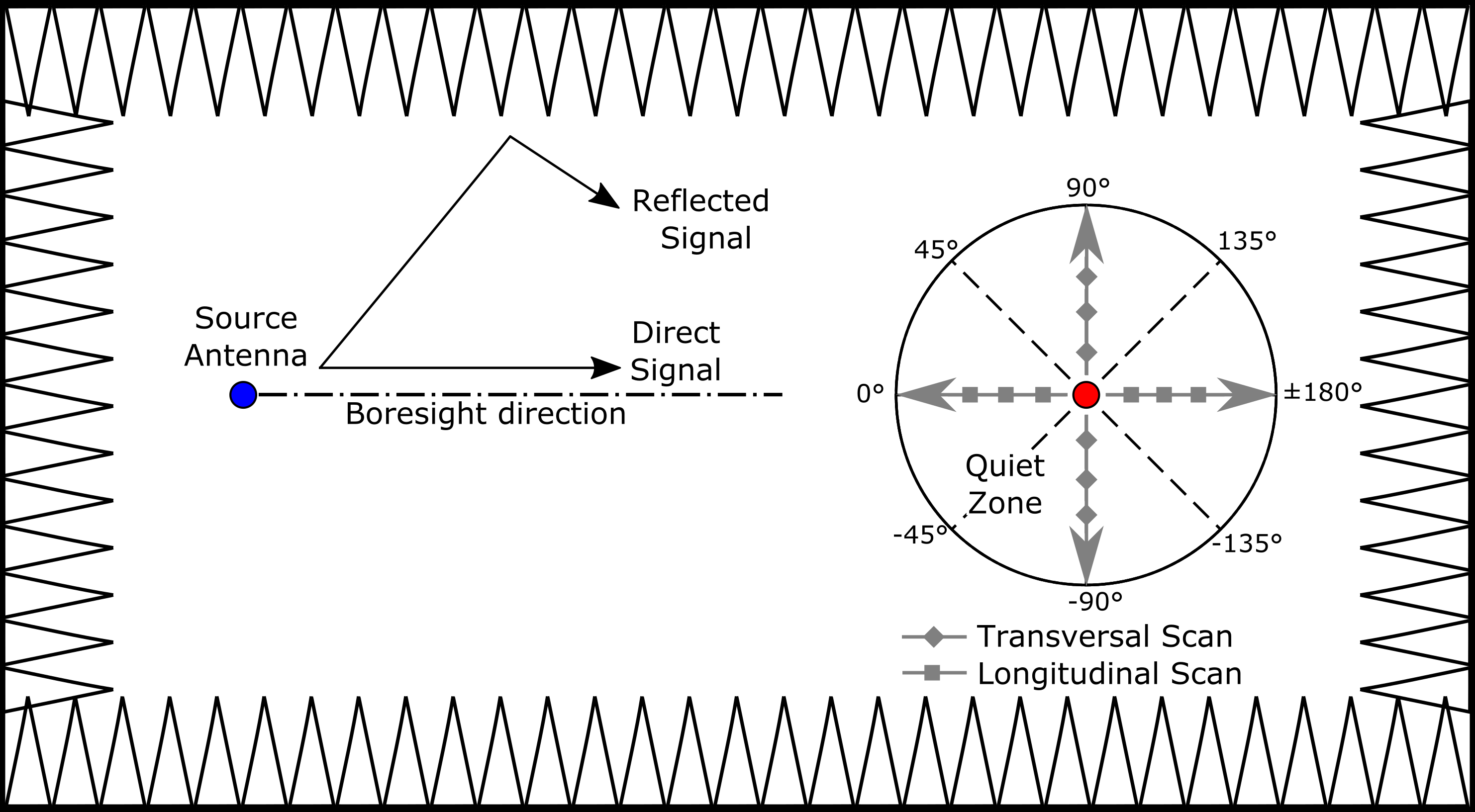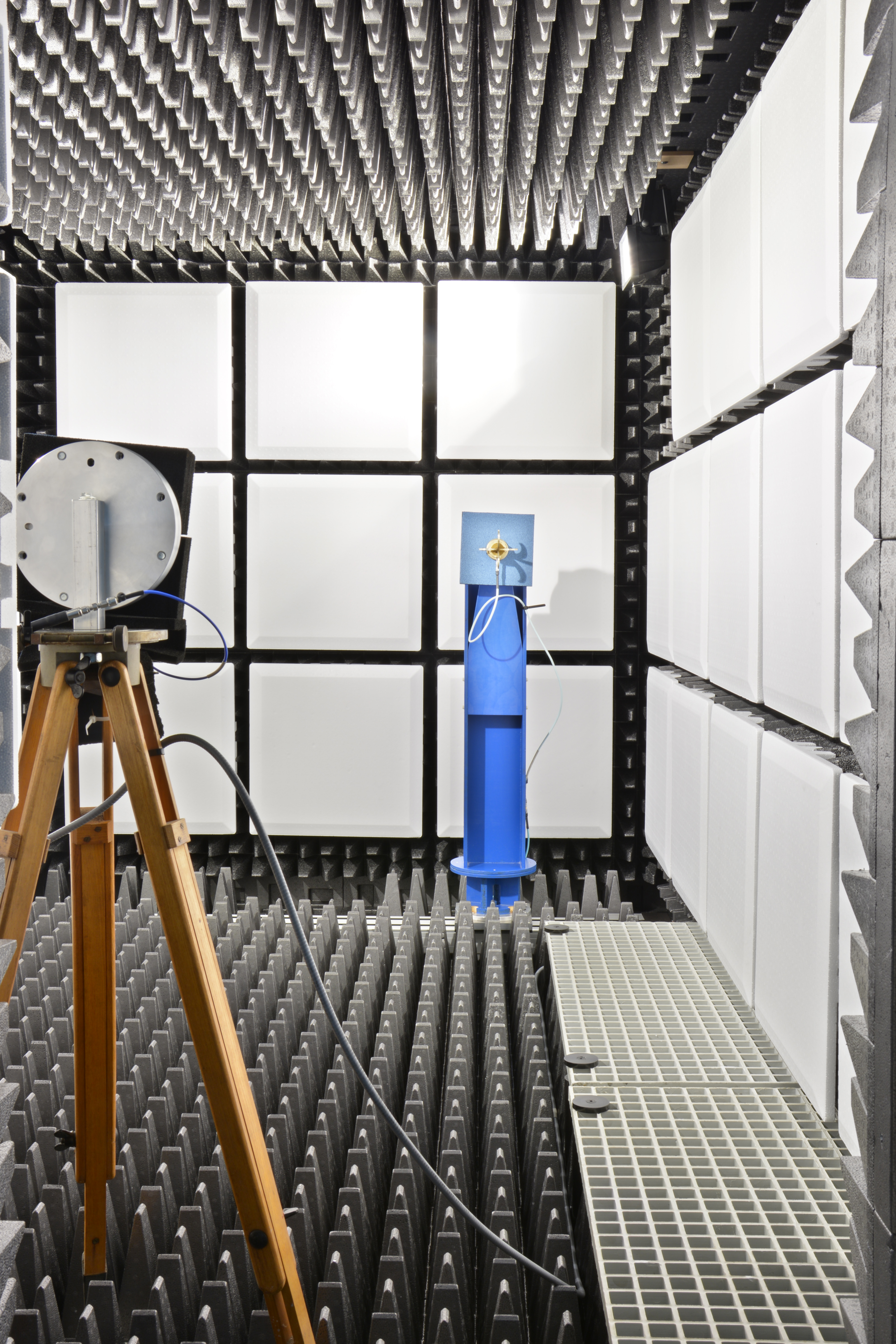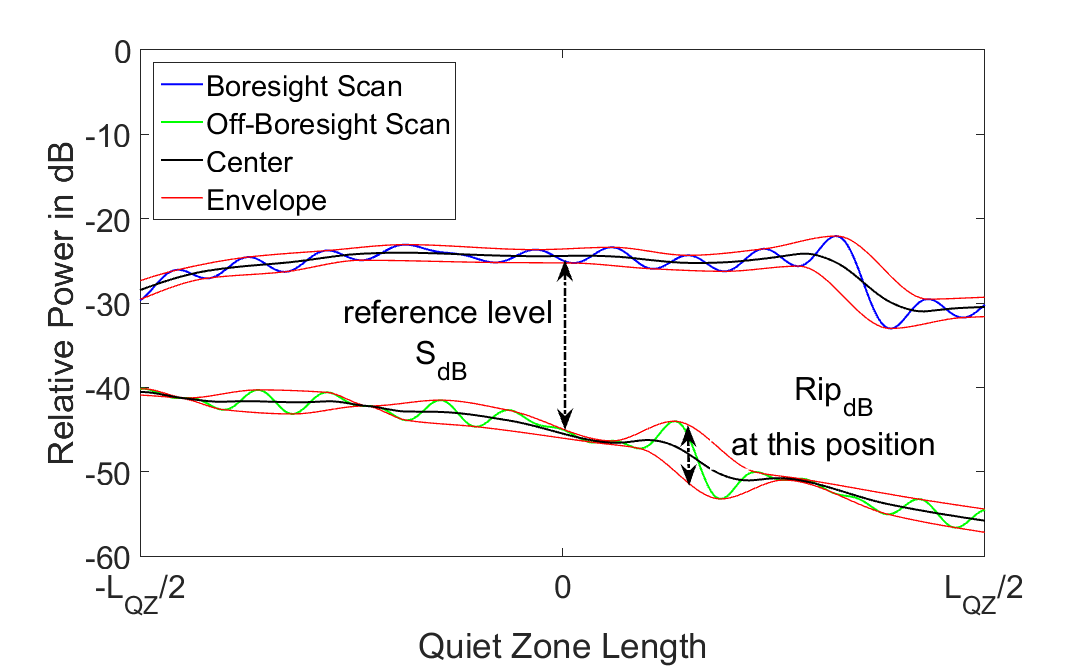Free-Space Voltage Standing Wave Ratio Method

An industry standard to characterize the antenna test range (ATR) is the Free-Space Voltage Standing Wave Ratio (VSWR) method [1], [2]. The method calculates reflectivity values from the signal oscillation inside the ATR test region. The measurement setup consists of a transmitting and receiving antenna, where the receiving antenna moves continuously along the quiet zone (QZ) on a transverse and longitudinal axes to the transmitting antenna. While the antenna moves the received signal is recorded using a vector network analyzer (VNA). The signal is a superposition of the direct signal from the source antenna and the reflections from the side, back walls and other aspects of the measurement chamber. The interference between the direct signal and the reflection signals are superimposed constructively and destructively so that the measured signal inside the QZ can be seen as variation along the scanning axis similar to a standing wave. The measurement is repeated for different aspect angles to cover reflections arriving from different directions, usually the angular step is 15° and the linear step is a half wavelength.
The transversal scan convers the front half of the QZ from -90° to 90° through 0° with the receiving antenna looking toward the transmitting antenna. The the longitudinal covers the back half from -90° to 90° through 180° with the receiving antenna looking toward the back wall.
Finally, the reflectivity is calculated by taking the maximum peak-to-peak measurement of the ripple after adding the reference amplitude at a given angle, as given in the equation below.

References
[1] J. Appel-Hansen, "Reflectivity level of radio anechoic chambers," vol. 21, no. 04, pp. 490-498, July 1973.
[2] L. Hemming, Electromagnetic Anechoic Chambers: A Fundamental Design and Specification Guide, 1. ed., John Wiley & Sons Inc, 2002.
[3] H. Shakhtour, J. Pamp, D. Heberling, H. De Groot and B. de Groot, "Quiet zone characterization of a Built-It-Yourself Antenna Test Chamber. In Antennas and Propagation," in Antennas and Propagation (EuCAP), 9th European Conference on. IEEE, Lisbon, Portugal, 2015.


